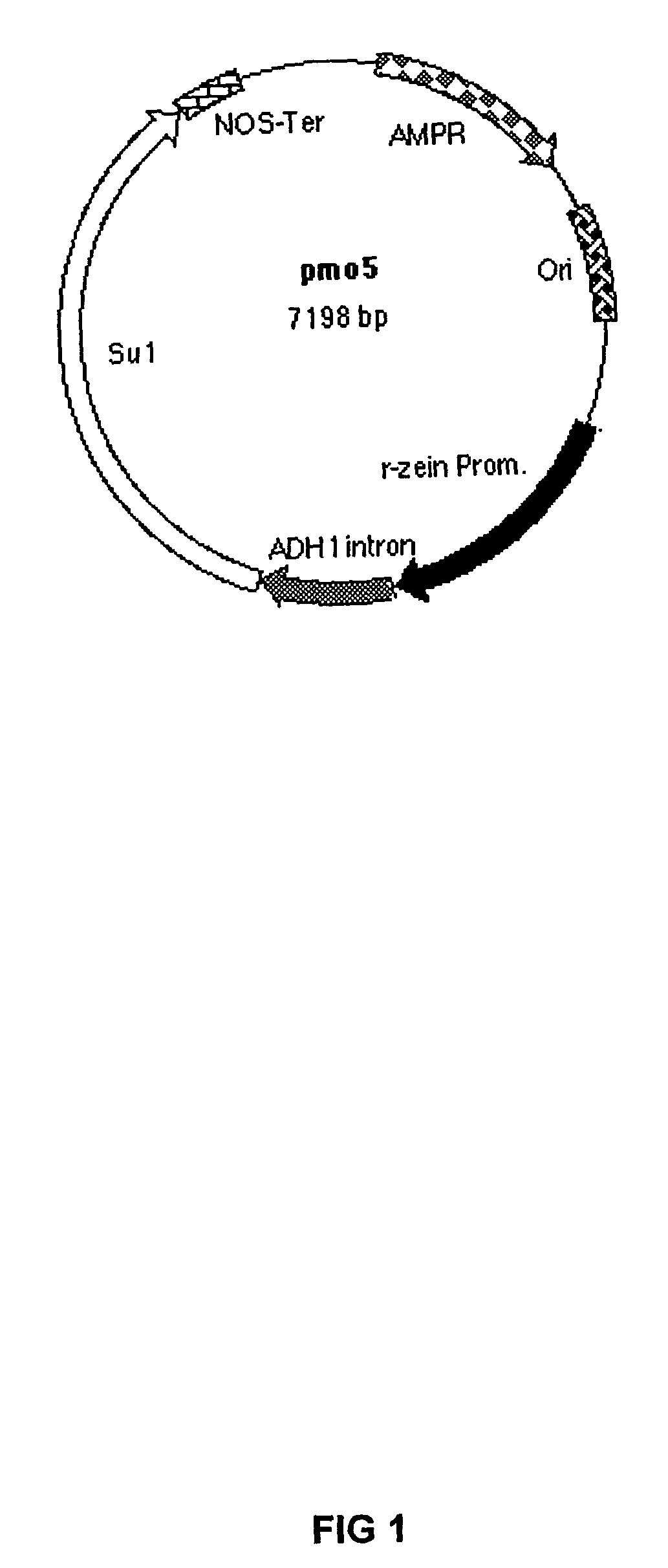Transgenic corn plants having seeds with modified cornstarch characteristics and method of making the transgenic corn plants
a technology of corn starch and corn, which is applied in the field of transgenic corn plants having modified corn starch characteristics and making transgenic corn plants, can solve the problems of less energy for processing and cooking, difficult starch separation, and energy-intensive chemical modification processes, and achieves the effect of easy and cost-effective modification of corn starch characteristics
- Summary
- Abstract
- Description
- Claims
- Application Information
AI Technical Summary
Benefits of technology
Problems solved by technology
Method used
Image
Examples
example
Materials and Methods
[0036]Construction of pMO5 vector: A plasmid 27.3-D was a kind gift from Dr. Brian Larkins' lab (University of Arizona), which contains the promoter of the maize gamma zein gene (Reina et al., 1990, which incorporated herein by reference in its entirety) in a pUC19 backbone. A SacI-EcoRI fragment containing the Nos terminator of Agrobacterium tumefaciens was sub-cloned from pBI101.3 (Clontech, Palo alto, Calif.) into 27.3-D to form pMO1. Subsequently, the first intron of maize AdhI gene was introduced into pMO1 to derive pMO2. The full-length cDNA of maize Sul gene (James et al., 1995) was inserted into the NcoI-NotI sites of pMO2 to create pMO5 (FIG. 1).
[0037]Construction of Barley SBE IIa Expression Vectors: For expression of barley SBE in corn, the barley sbeIIa cDNA (GenBank Accession Number AF064560, provided as SEQ ID NO:1 herein) (Sun et al., 1998) was amplified by PCR with Taq DNA polymerase using the upper primer (5′-ACGCGTAGATCTGGCGCCATGGCGGAAGTAAA-3′)...
PUM
| Property | Measurement | Unit |
|---|---|---|
| digestibility | aaaaa | aaaaa |
| pH | aaaaa | aaaaa |
| elongation time | aaaaa | aaaaa |
Abstract
Description
Claims
Application Information
 Login to View More
Login to View More - R&D
- Intellectual Property
- Life Sciences
- Materials
- Tech Scout
- Unparalleled Data Quality
- Higher Quality Content
- 60% Fewer Hallucinations
Browse by: Latest US Patents, China's latest patents, Technical Efficacy Thesaurus, Application Domain, Technology Topic, Popular Technical Reports.
© 2025 PatSnap. All rights reserved.Legal|Privacy policy|Modern Slavery Act Transparency Statement|Sitemap|About US| Contact US: help@patsnap.com


